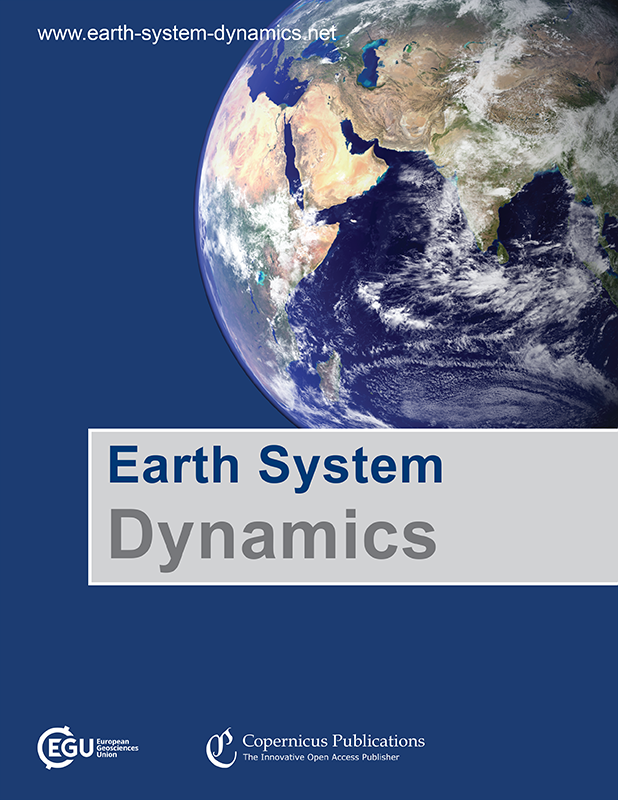Extending MESMER-X: a spatially resolved Earth system model emulator for fire weather and soil moisture
IF 7.2
2区 地球科学
Q1 GEOSCIENCES, MULTIDISCIPLINARY
引用次数: 0
Abstract
Abstract. Climate emulators are models calibrated on Earth system models (ESMs) to replicate their behavior. Thanks to their low computational cost, these tools are becoming increasingly important to accelerate the exploration of emission scenarios and the coupling of climate information to other models. However, the emulation of regional climate extremes and water cycle variables has remained challenging. The MESMER emulator was recently expanded to represent regional temperature extremes in the new “MESMER-X” version, which is targeted at impact-related variables, including extremes. This paper presents a further expansion of MESMER-X to represent indices related to fire weather and soil moisture. Given a trajectory of global mean temperature, the extended emulator generates spatially resolved realizations for the seasonal average of the Canadian Fire Weather Index (FWI), the number of days with extreme fire weather, the annual average of the soil moisture, and the annual minimum of the monthly average soil moisture. For each ESM, the emulations mimic the statistical distributions and the spatial patterns of these indicators. For each of the four variables considered, we evaluate the performances of the emulations by calculating how much their quantiles deviate from those of the ESMs. Given how it performs over a large range of annual indicators, we argue that this framework can be expanded to further variables. Overall, the now expanded MESMER-X emulator can emulate several climate variables, including climate extremes and soil moisture availability, and is a useful tool for the exploration of regional climate changes and their impacts.扩展 MESMER-X:用于火灾天气和土壤湿度的空间分辨率地球系统模型模拟器
摘要。气候模拟器是在地球系统模型(ESM)上校准的模型,以复制其行为。由于计算成本低廉,这些工具在加速探索排放情景和将气候信息与其他模型耦合方面变得越来越重要。然而,区域极端气候和水循环变量的模拟仍然具有挑战性。最近,MESMER 仿真器在新的 "MESMER-X "版本中进行了扩展,以表示区域极端温度,该版本主要针对与影响相关的变量,包括极端温度。本文介绍了 MESMER-X 的进一步扩展,以表示与火灾天气和土壤湿度相关的指数。在给定全球平均气温轨迹的情况下,扩展模拟器会生成加拿大火灾天气指数(FWI)的季节平均值、极端火灾天气的天数、土壤湿度的年平均值以及月平均土壤湿度的年最小值等空间分辨率的现实值。对于每个 ESM,仿真模拟了这些指标的统计分布和空间模式。对于所考虑的四个变量中的每一个变量,我们通过计算其量化值与 ESM 的量化值的偏差程度来评估模拟的性能。鉴于其在大量年度指标上的表现,我们认为该框架可扩展至更多变量。总之,现已扩展的 MESMER-X 模拟器可以模拟多个气候变量,包括极端气候和土壤水分可用性,是探索区域气候变化及其影响的有用工具。
本文章由计算机程序翻译,如有差异,请以英文原文为准。
求助全文
约1分钟内获得全文
求助全文
来源期刊

Earth System Dynamics
GEOSCIENCES, MULTIDISCIPLINARY-
CiteScore
13.20
自引率
5.50%
发文量
61
审稿时长
36 weeks
期刊介绍:
Earth System Dynamics (ESD) is a not-for-profit international scientific journal committed to publishing and facilitating public discussion on interdisciplinary studies focusing on the Earth system and global change. The journal explores the intricate interactions among Earth's component systems, including the atmosphere, cryosphere, hydrosphere, oceans, pedosphere, lithosphere, and the influence of life and human activity. ESD welcomes contributions that delve into these interactions, their conceptualization, modeling, quantification, predictions of global change impacts, and their implications for Earth's habitability, humanity, and the future dynamics in the Anthropocene.
 求助内容:
求助内容: 应助结果提醒方式:
应助结果提醒方式:


